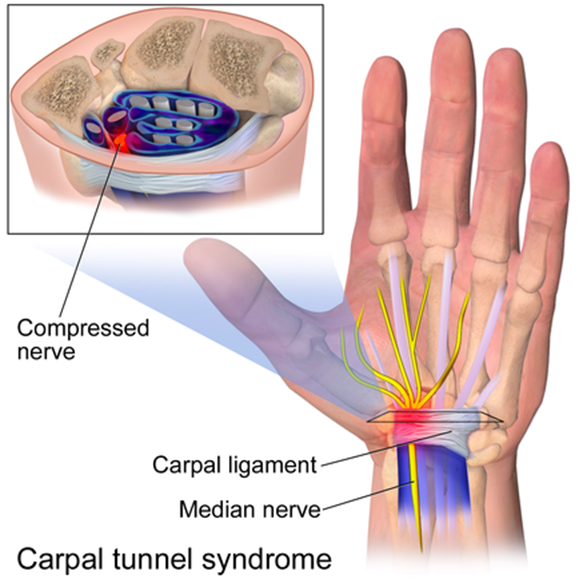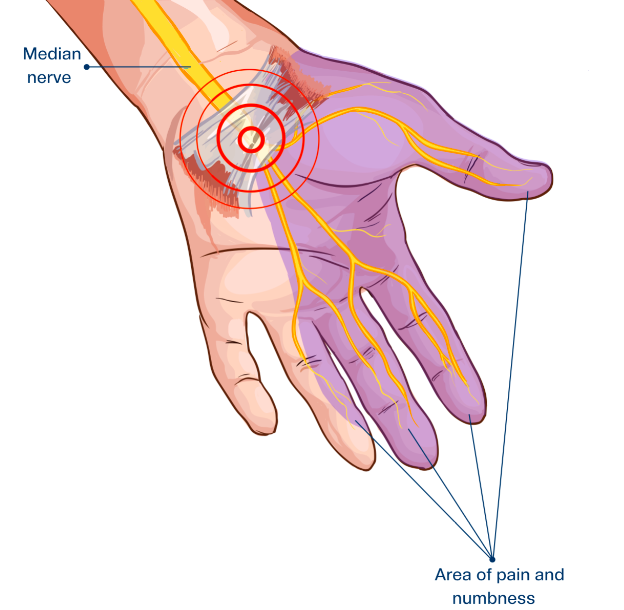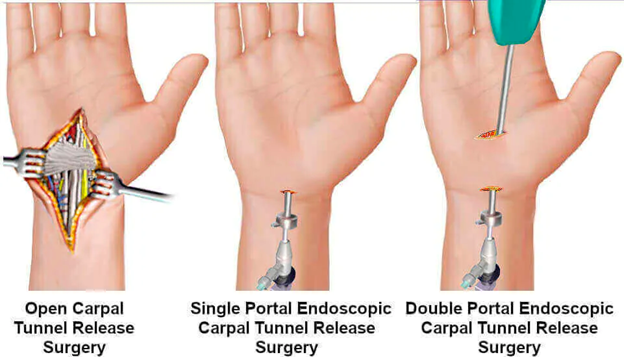Carpal Tunnel Syndrome
Postet on by Amanda Buck
Lately, I’ve seen an uptick in some diagnoses related to our ‘NEW normal”. One scenario that many more people are finding themselves in is that they are now working from home without a proper desk setup or comfortable chair. And some are now finding that they have increased pain, numbness or tingling in their wrist and hand. Uh-oh, may be carpal tunnel syndrome.
Carpal tunnel syndrome is when there is compression to the median nerve in the wrist, specifically in the carpal tunnel.

The most common cause of the inflammation is an underlying medical condition that can result in swelling and, sometimes obstructed blood flow.
Some common examples :
- High blood pressure
- Diabetes
- Hypothyroidism
- Pregnancy
- Autoimmune diseases such as rheumatoid arthritis
- Previous fracture or trauma to the wrist
Inflammation could also be the result of repetitive motion through the wrist.
Examples include:
- Typing on a computer keyboard
- Playing a musical instrument such as piano, guitar or violin
- Sculpting, painting
- Prolonged vibration from hand or power tools
Common symptoms
- Waking in the middle of the night with hand and wrist pain
- A burning sensation in the middle and index fingers
- Thumb and finger numbness
- An electric-like shock through the wrist and hand
- Weakness in the muscles of the hand

How is carpal tunnel syndrome diagnosed?
A doctor (or physiotherapist) will evaluate your history of the symptoms and conduct a thorough physical examination testing strength, sensation and reflexes. Sometimes a nerve conduction test or an x-ray will be ordered by a doctor to confirm diagnosis.
Non-surgical treatment options
- Wearing a brace or splint to keep the wrist in a neutral position (especially overnight)
- Anti-inflammatory medications
- Managing any underlying conditions
- Steroid injections
- Physiotherapy
- Massage therapy
If there is severe pain that cannot be relieved through rest, rehabilitation or non-surgical treatment, then surgery may be the only option to relieve pressure on the median nerve.

Post-surgery rehabilitation is necessary to decrease pain and inflammation and to review biomechanics.
How can I prevent carpal tunnel syndrome?
Treating conditions such as diabetes, high blood pressure, and arthritis reduces your risk for developing carpal tunnel syndrome.
You can prevent carpal tunnel syndrome by making lifestyle changes that reduce your risk factors for developing it.
Paying careful attention to hand posture and avoiding activities that overextend your wrist are also important strategies for reducing symptoms.
See a health professional at the first sign of symptoms.
Brian Redillas, RMT

About twice a month our therapists will be posting answers to commonly asked questions. So, if you have a burning question that you want answered let us know in the comments below.
We can cover anything ranging from active rehabilitation, to injury prevention.
This week our featured therapist is Brian Redillas. To learn more about Brian check out our PhysioWorks team.


Leave a Reply